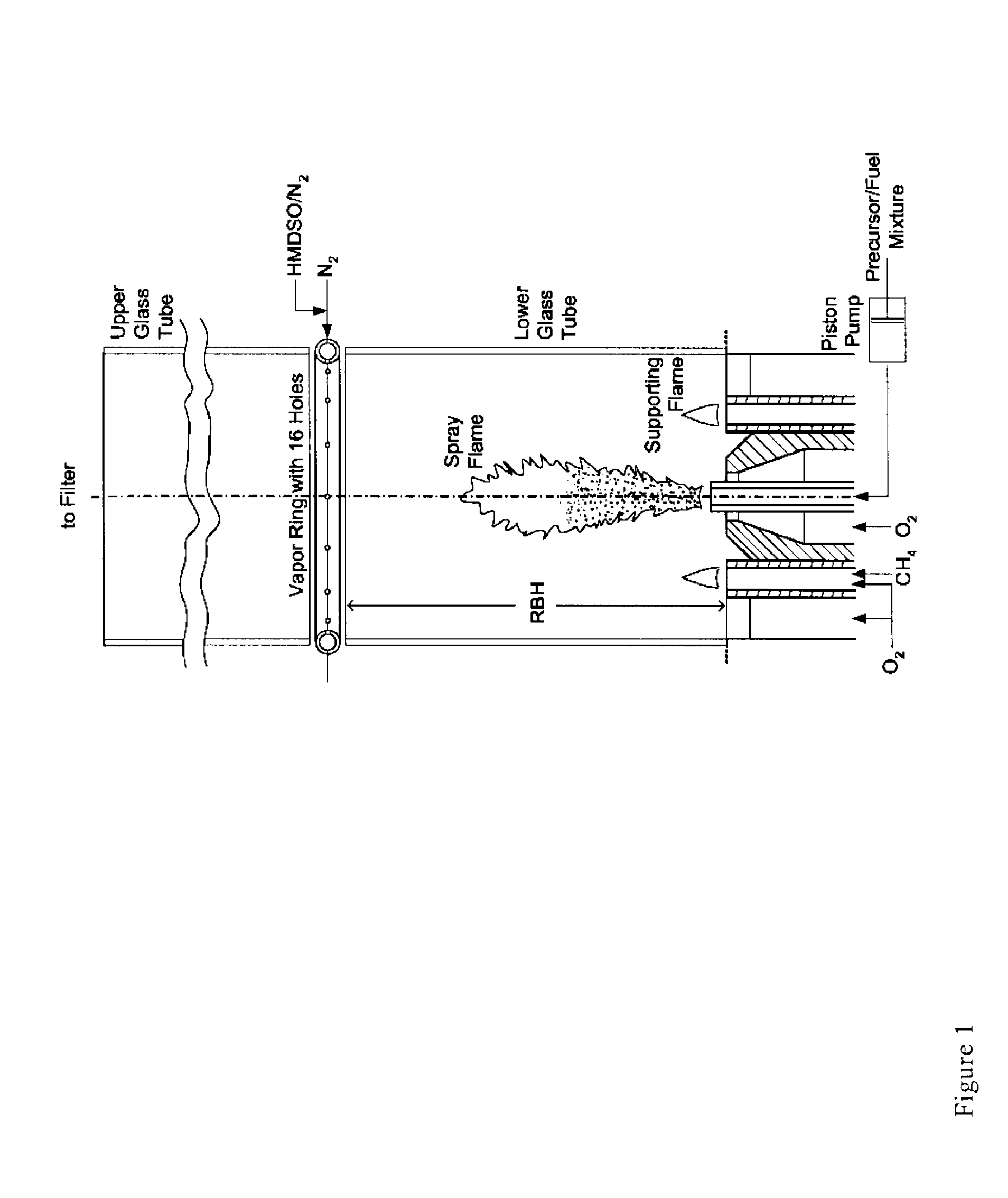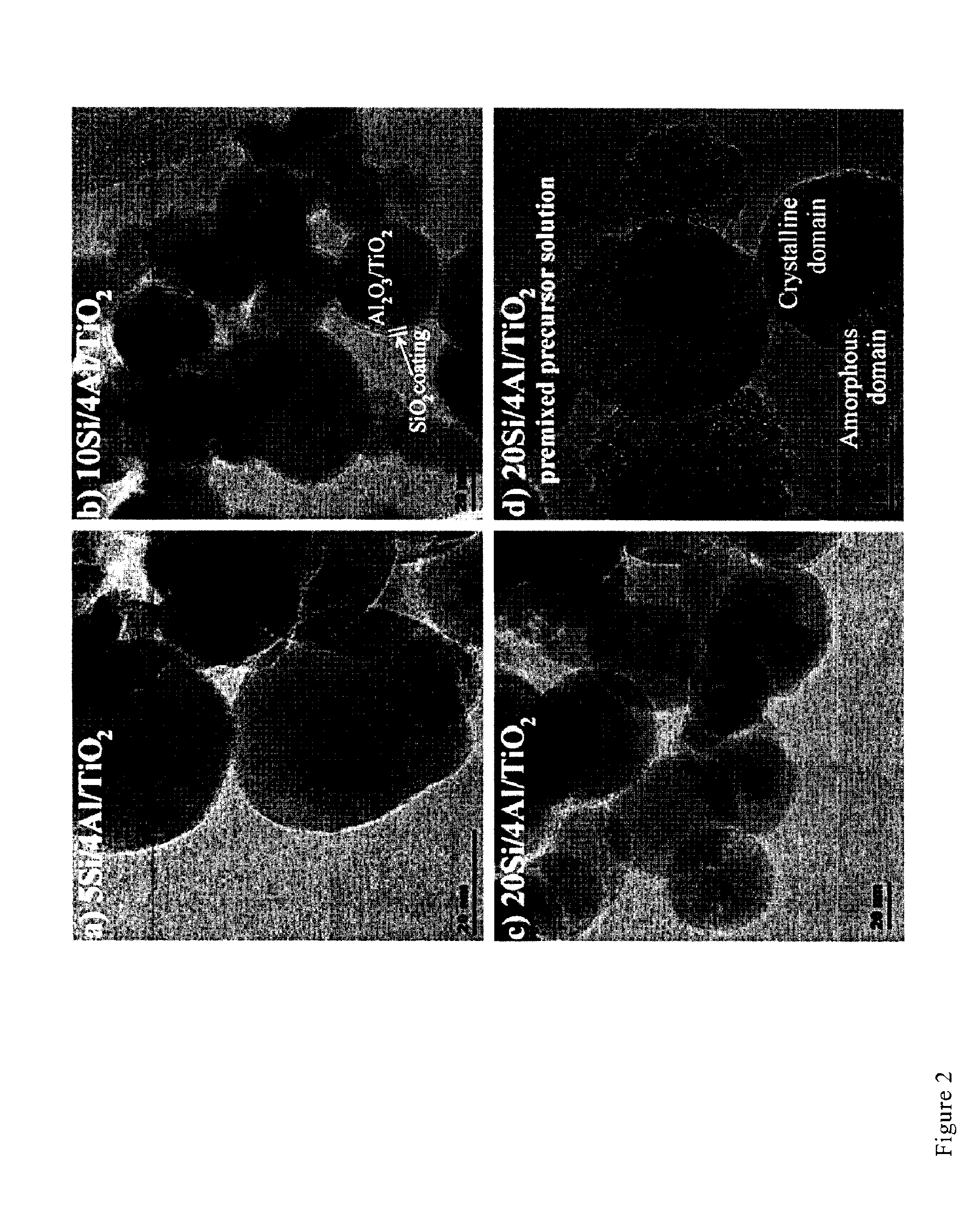Gas phase production of coated titania
a technology of titania and gas phase, which is applied in the direction of coatings, titanium dioxide, molten spray coatings, etc., can solve the problems of reducing the production efficiency of titania, increasing the production time and cost, and agglomerating grains
- Summary
- Abstract
- Description
- Claims
- Application Information
AI Technical Summary
Benefits of technology
Problems solved by technology
Method used
Image
Examples
example 1
Influence of Silica Content on Particle Morphology
[0098]FIG. 2 shows Al-doped TiO2 particles coated with 5 wt. % (a), 10 wt. % (b) and 20 wt. % (C) SiO2. At 5 wt % SiO2 (FIG. 2a) coatings are not visible in the TEM image but a thin amorphous layer could still be present on the particle surface. All Al-doped titania particles with 10 wt. % (FIG. 2b) and 20 wt % SiO2 (FIG. 2c) are homogeneously coated with a homogeneous layer of SiO2 2-4 nm thick. Separate amorphous particles were not observed at any SiO2 content. In contrast, when HMDSO is introduced with the TiO2 precursor solution, particles segregated in amorphous and crystalline domains are obtained (FIG. 2d) along with some coated particles. This is analogous to the process described in U.S. Pat. No. 7,083,769, which describes the introduction of a silica precursor (SiCl4) simultaneously with the TiCl4 into the flame of a FSP reactor. The segregation of amorphous silica and crystalline titania was confirmed by EDX and STEM analy...
example 2
Effect of Ring-Burner-Height (RBH)
[0104]FIG. 7 shows the evolution of acetone as a function of RBH. The acetone formed decreases from 99 to 7 μg acetone as the RBH is increased from 5 to 30 cm, respectively. This is a result of the increasing rutile content as well as the formation of homogeneous SiO2 coatings with increasing RBH.
PUM
| Property | Measurement | Unit |
|---|---|---|
| particle size | aaaaa | aaaaa |
| particle size | aaaaa | aaaaa |
| specific surface area | aaaaa | aaaaa |
Abstract
Description
Claims
Application Information
 Login to View More
Login to View More - R&D
- Intellectual Property
- Life Sciences
- Materials
- Tech Scout
- Unparalleled Data Quality
- Higher Quality Content
- 60% Fewer Hallucinations
Browse by: Latest US Patents, China's latest patents, Technical Efficacy Thesaurus, Application Domain, Technology Topic, Popular Technical Reports.
© 2025 PatSnap. All rights reserved.Legal|Privacy policy|Modern Slavery Act Transparency Statement|Sitemap|About US| Contact US: help@patsnap.com



